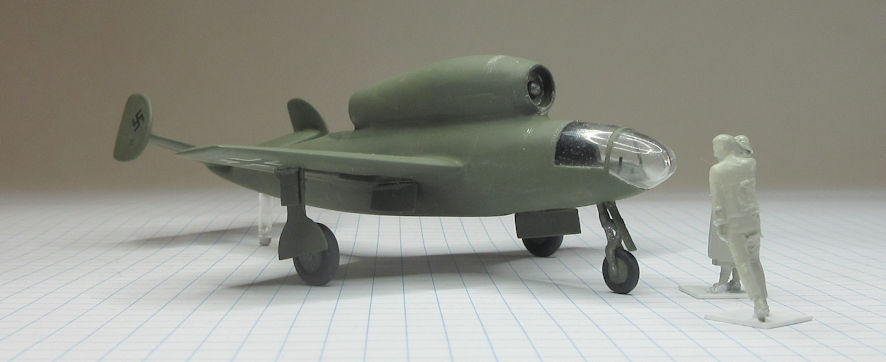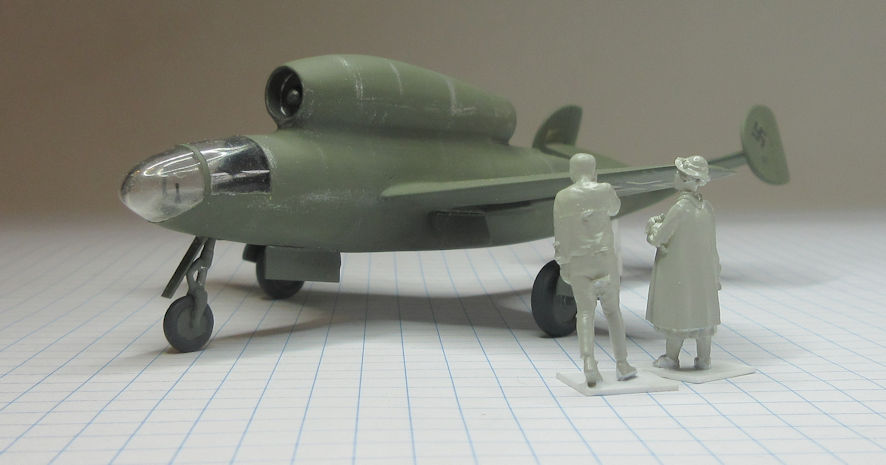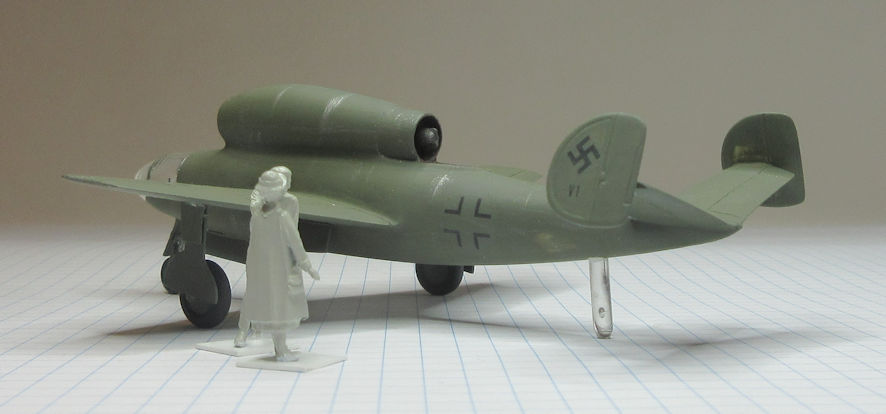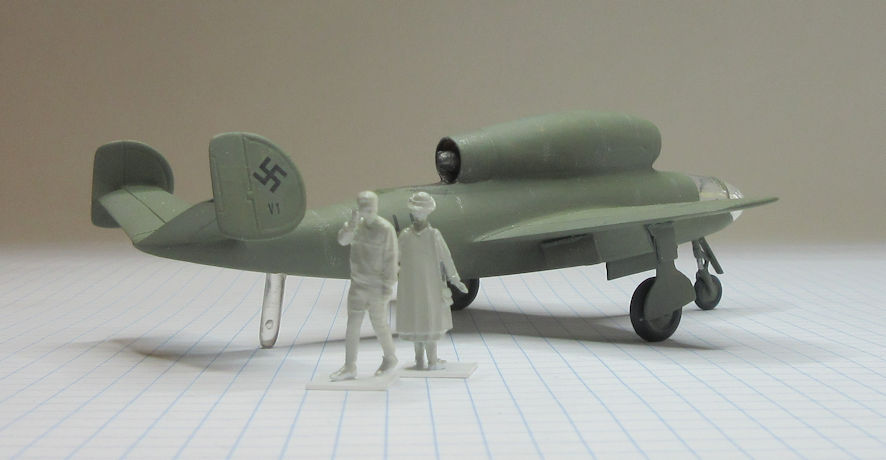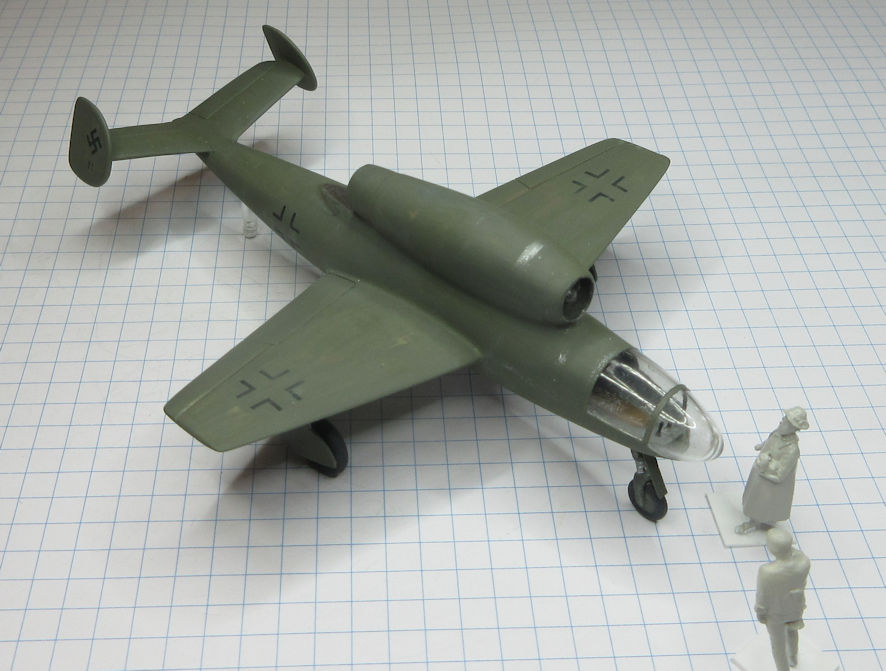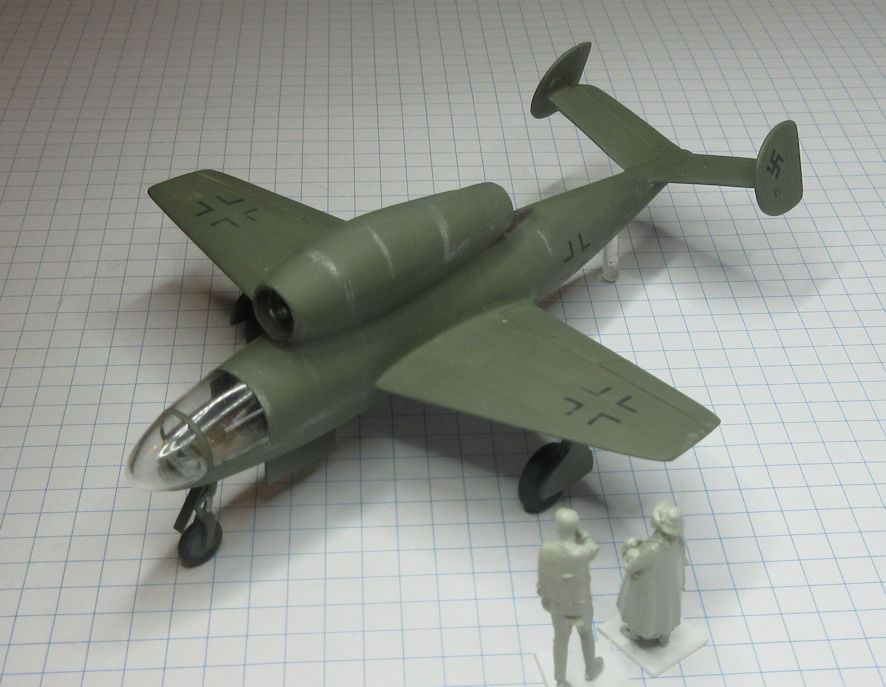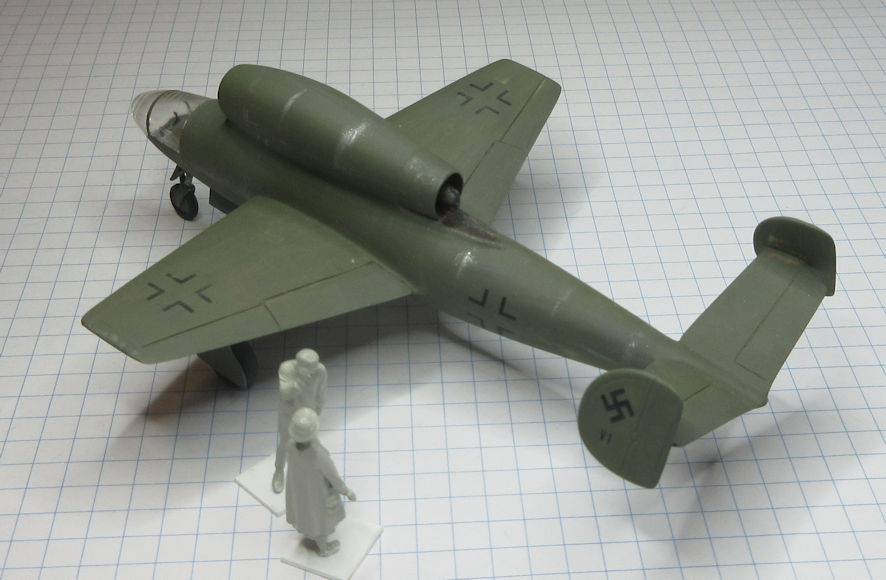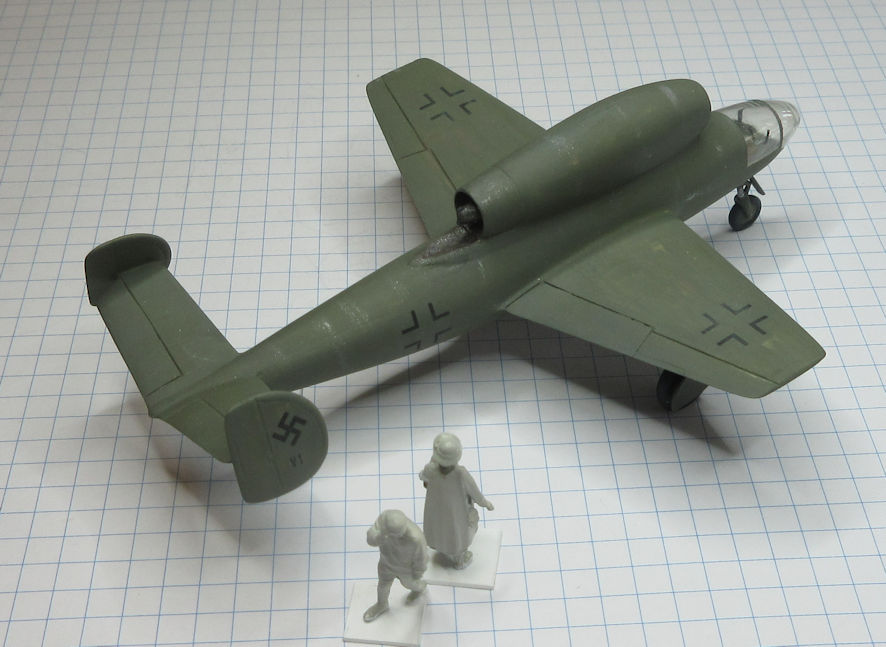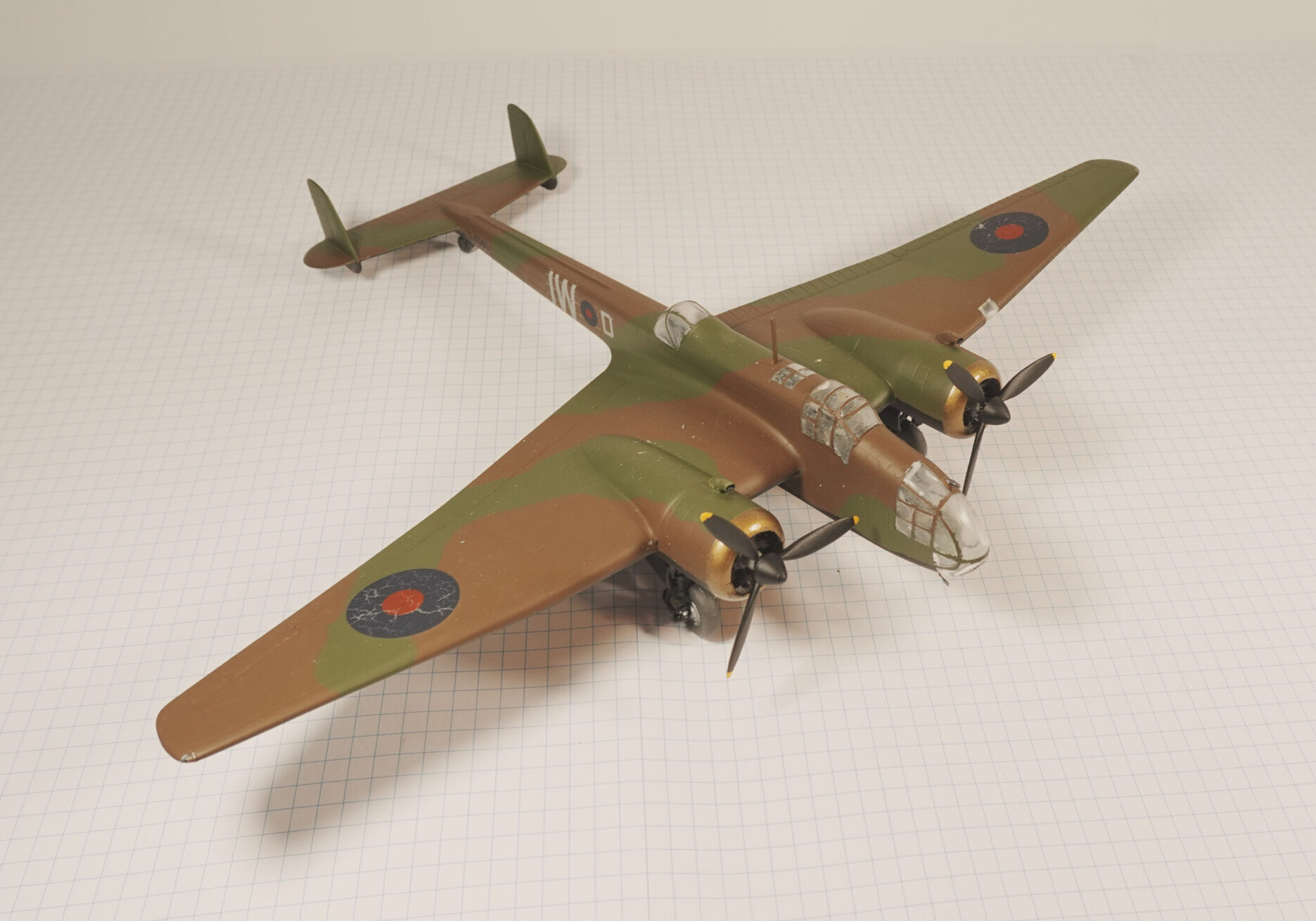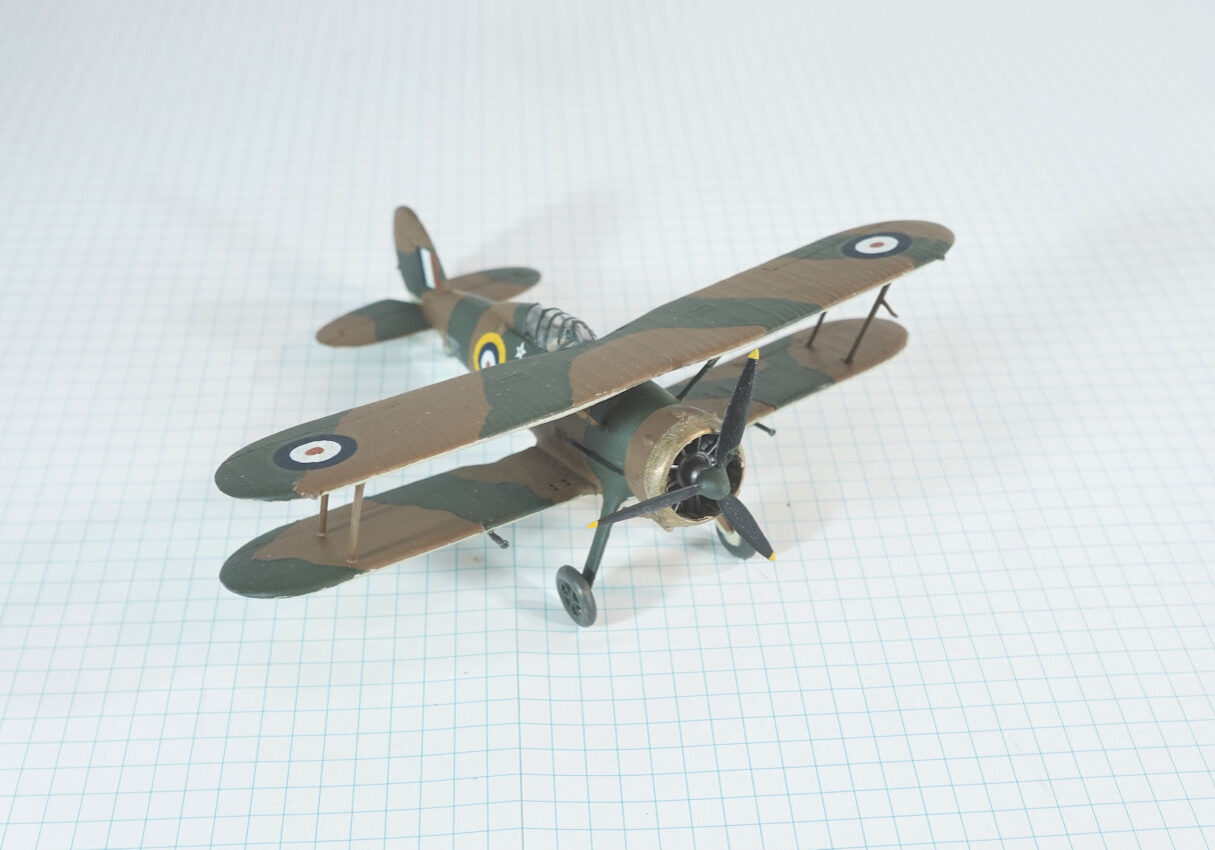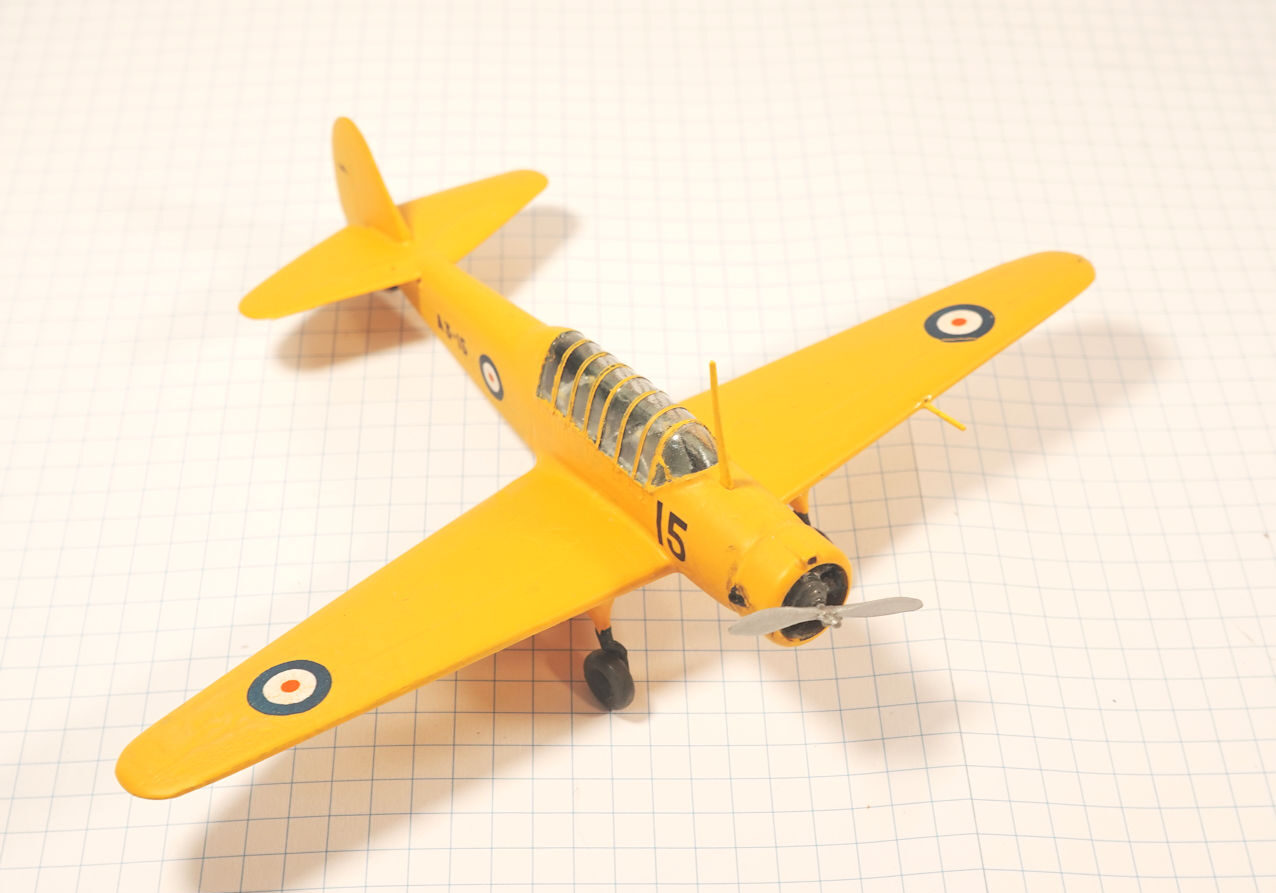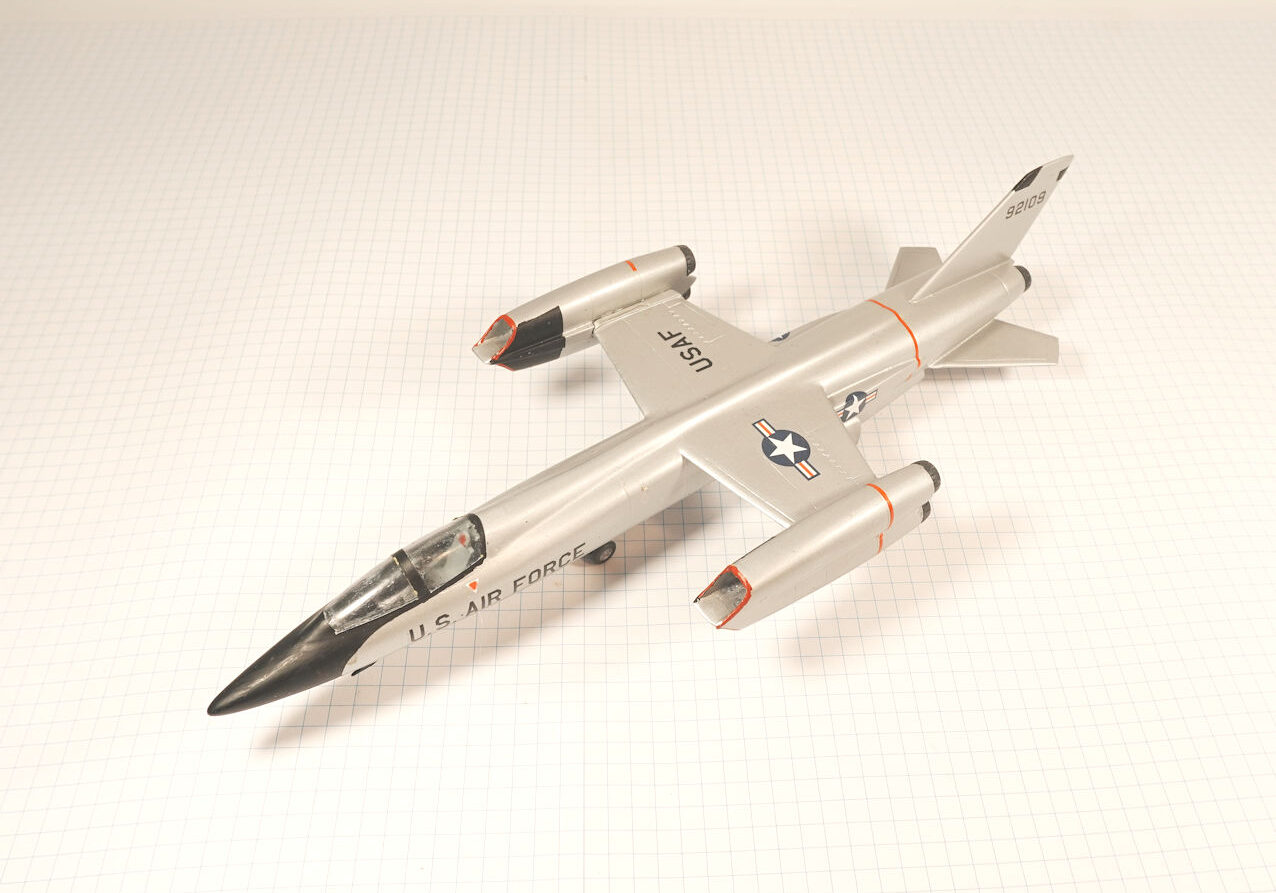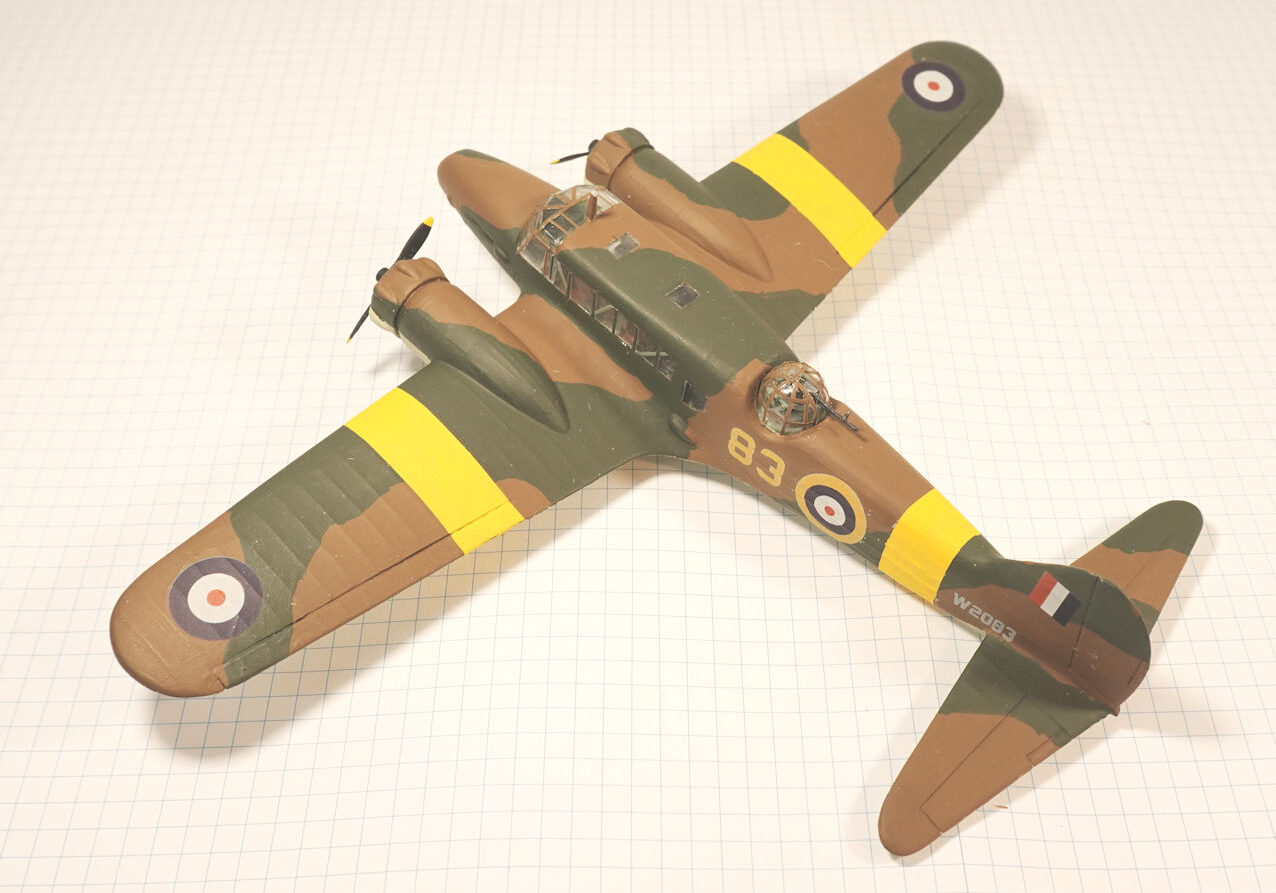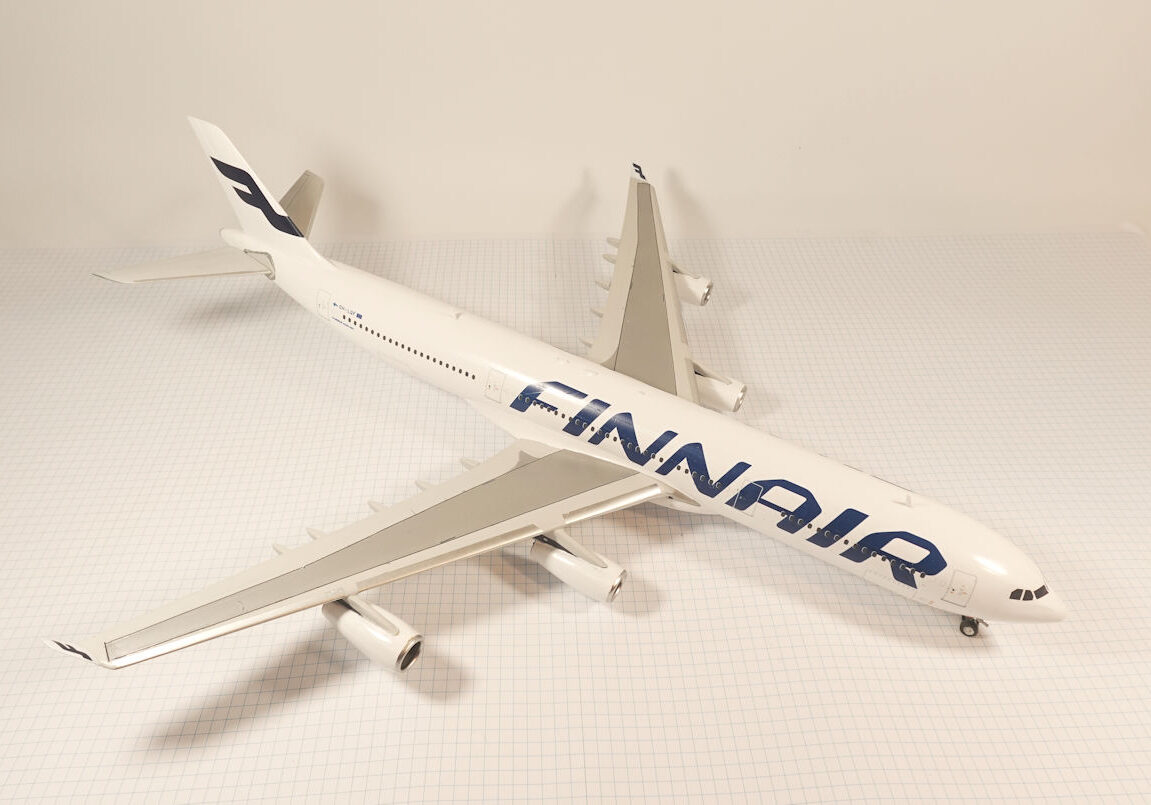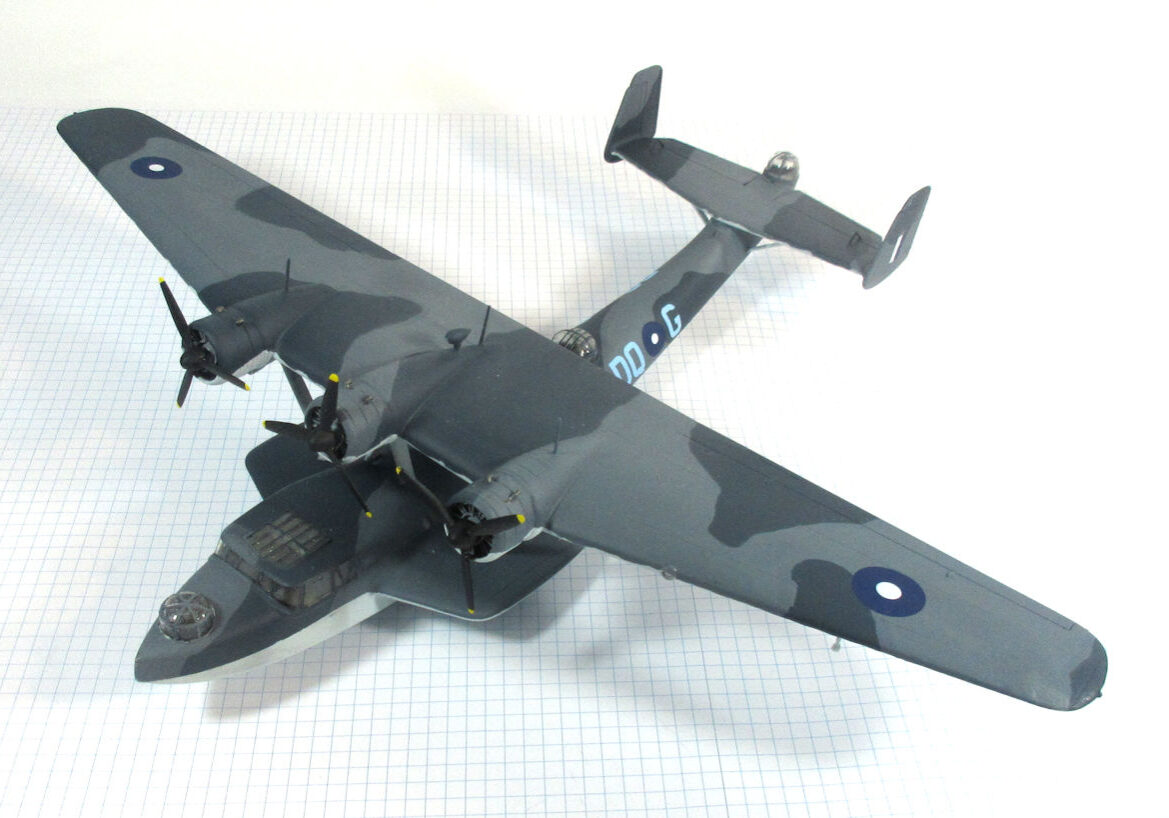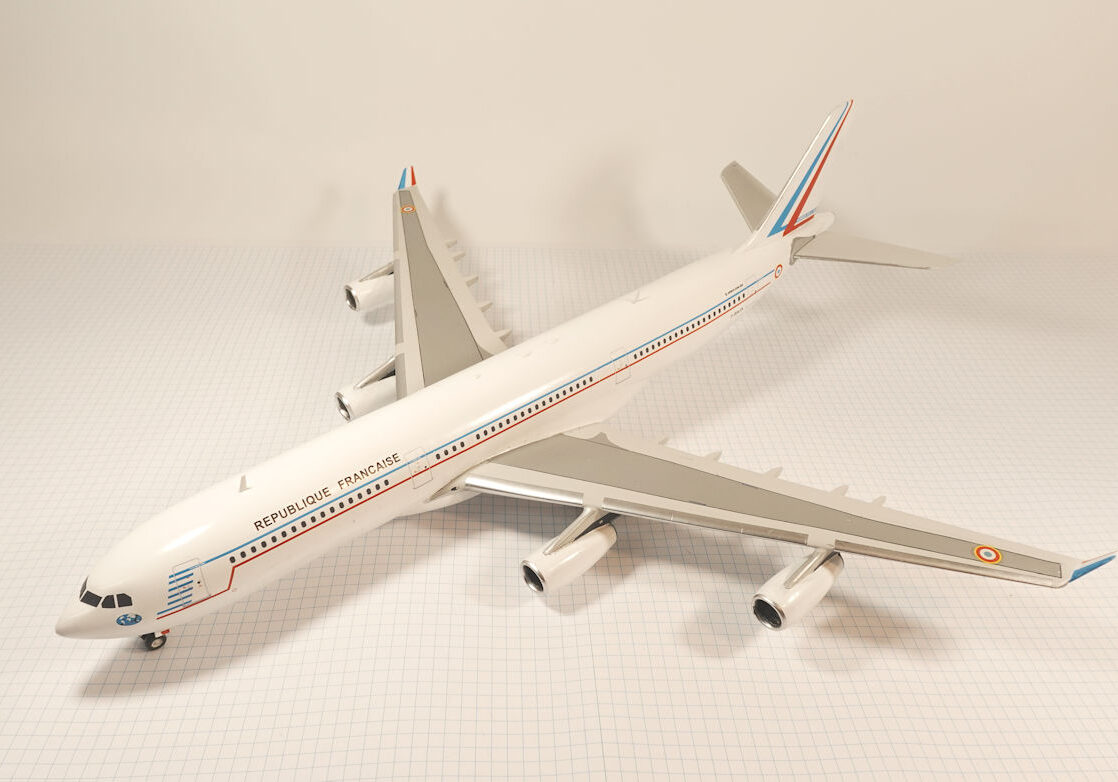History
The Henschel Hs132 was designed as a high speed ground attack aeroplane that would be almost invulnerable to enemy defences. Design work started in July 1943 but the little bomber had not flown by the end of the war in 1945.
By 1943 German forces were beginning to be pushed back and their existing ground attack aeroplanes, such as the Ju87, were obsolete and needed replacement.
A specification for a new single-seat shipping attack aircraft was issued in February 1943 which led to development of the Hs132 which was given official approval in mid 1944.
The most striking feature of the design was the prone pilot’s position, used because experiments had shown that pilots lying down could withstand greater g-forces than a sitting pilot.
A contract was issues in May 1944 for six prototypes and construction began in March 1945 but none had been completed and flown before the end of the war.
This model represents the first prototype.
Huma 1/72 kit. Completed in October 1989.
